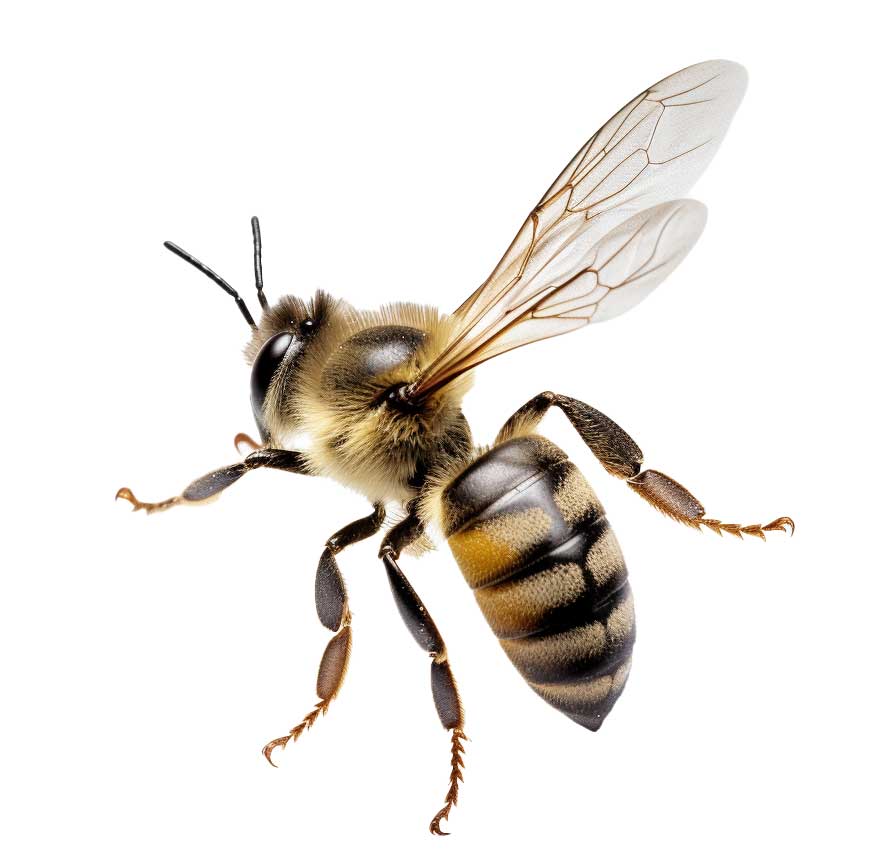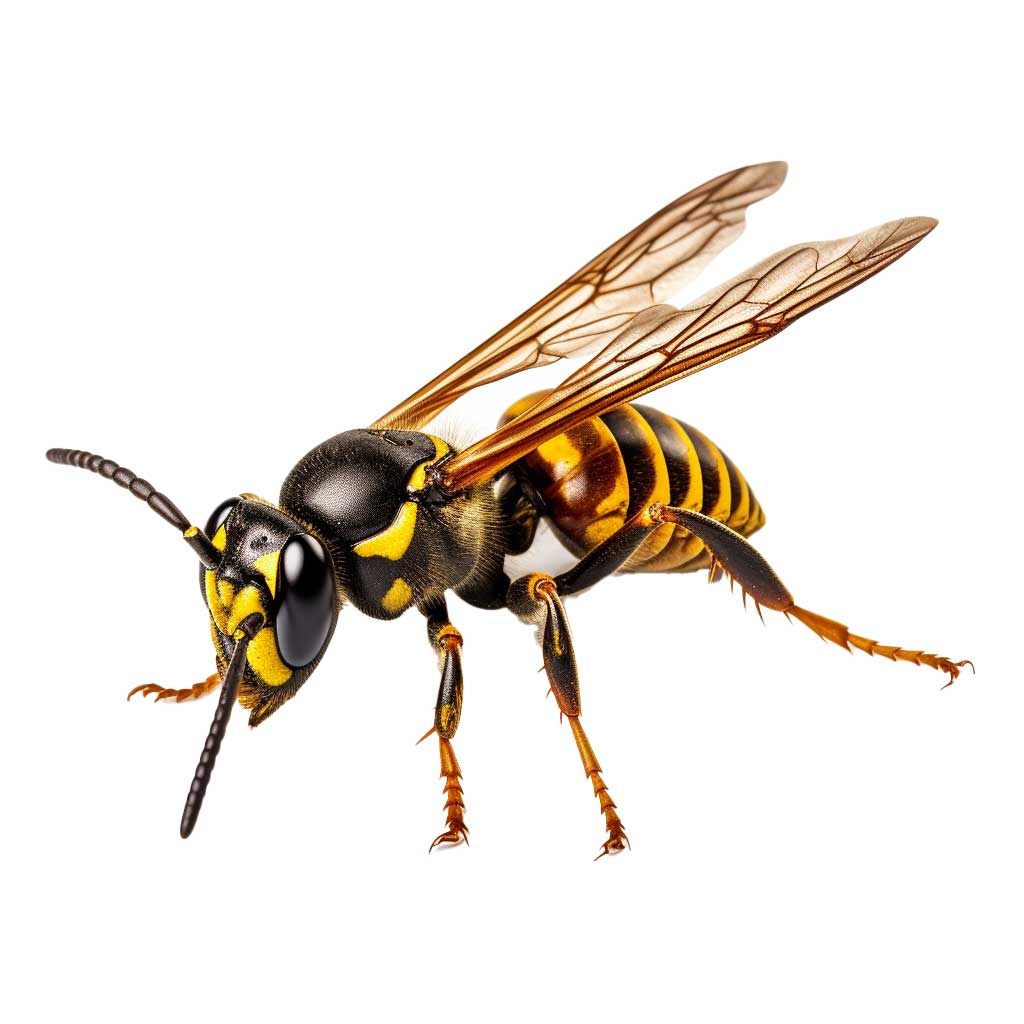03 6268 5397
Australia is home to a wide variety of bee and wasp species, which perform critical roles in pollination and ecological processes.
Did you know European bees were first successfully introduced into Tasmania in 1831 and the first Italian bees were introduced in 1884.
While Bees & Wasps can be confused for one another, there is a big difference in their behaviour that sets them apart. Bees can only sting once before they die and aren’t particularly aggressive but will attack if provoked. Wasps on the other hand can deliver multiples times and are quite aggressive when they face threat to their nest.
What is the difference between honeybees and native bees?
The Honeybee (Apis mellifera) is the most prevalent species in the world and, owing to its honey producing capabilities, is one of the beekeepers’ preferred species for both honey production and pollination.
They range in size 12mm-15mm variable in colour but are usually brown with a banded dull yellow and brown abdomen.

Honeybees are normally better pollinators, although tiny native bees may access smaller blooms are also crucial pollinators. Honeybees reside in a nest or hive dominated by a single queen. The queen, who is bigger than the workers or the male drones, is in charge of egg production and pheromone-based hive management. Worker bees make up the majority of the hive and construct, maintain, and gather nectar and pollen for the bee larvae to eat.
When stung by a honeybee, the barbed sting (complete with connected venom gland) sticks in the skin and rips free of the insect. The bee dies from this wound, but the venom gland keeps spitting poison into the sting, therefore it must be removed as quickly as possible. Avoid pressing on it since doing so will push more venom into the wound. The easiest way to get the sting out is to scrape it off with your fingernail.
There are around 1,700 Native Bee species in Australia, only 11 of these species have no sting!
These are the native honeybees (Tetragonula – formerly Trigona – and Austroplebeia). All of Australia’s native bees have the ability to sting, they range in size from 2mm to 26mm in size and can be fluffy, sparkly, single-coloured, or vividly coloured due to their development over hundreds of years in Australia. The native bee doesn’t store nectar and therefore generally doesn’t create honey.
Bee control:
We endeavour to protect Tasmania’s Bee populations where we can. We will employ a local beekeeper to safely relocate hives, however in circumstances where Bee hives are inaccessible, such as roof voids and walls, we will treat the hive or in urgent situations where people have a severe allergy that could lead to potentially life threating situations (Anaphylaxis).
It’s crucial to use caution while near nesting areas and wear protective clothing as necessary to avoid getting stung.
There are many different types of wasps in Australia, including solitary wasps and social wasps like paper wasps and mud daubers. Some wasps are parasitoids, which means that they deposit their eggs on or within other insects, frequently caterpillars or spiders, so that the growing larvae of other insects may feed on them.
There are two commonly found Wasps in Tasmania, the European and the English Wasp, both capable of inflicting painful stings. As wasps can be aggressive, the services of a pest control technician are recommended as being the safest and most effective means for the control.
The workers of both species are sterile females that are 12 to 15 mm in length and have black bodies with yellow stripes. They are swift flyers with transparent wings that wrap over their body lengthwise.
Males and queens are both around 20mm in length, with the male having a long, thin abdomen and the queen a robust one.

Wasps commonly seek eaves, porch ceilings and overhangs to nest in. Unfortunately there is many reasons you may have wasps on your property, including:
A wasp nest can range in size from 15 centimetres to 5 metres, and it can include up to 4 million cells and more than 100,000 workers.
Treating a wasp nest is a complex process and requires professional help to effectively destroy the whole nest. We strongly advise not to do it yourself, as wasps are very protective of their nests. Our technicians carry the correct protective gear to carry out the service.
Before Scorpion can treat the Wasp nest, it is important that you locate it first. Once the nest is located, we spray an insecticide powder directly into the nest, effectively killing all wasps it touches. A lot of wasp nests are found in the ground, and you will generally see the wasps flying in, out and around the hole. In some cases wasps may be just swarming, and there may not be a nest on the premises, this is why it is important to locate it first.
To prevent stings, it’s important to exercise caution around nesting locations and wear protective clothes when necessary.
The treatment of Bees is very similar to the process of a wasp treatment. Scorpion will assess the nest and if possible, will call a local Beekeeper to remove the nest. Unfortunately, many people are allergic to bees, and it is important that we treat the hive ASAP. We don’t cut holes in walls etc, but the honeycomb should be removed, this will require a builder.
Yes, we use only the safest products on today’s market available to our industry.
The short answer is NO, Consuming honey from a pesticide-treated hive has the potential to be hazardous to your health. Pesticides are chemicals used to kill or control pests, and their usage in beehives has the potential to contaminate honey, beeswax, and other hive products.
Because some bees and wasps may not be in the hive at the time of treatment, it may take 24-48 hours to take full affect; nevertheless, the residue left behind will kill any returning bees or wasps on contact.
There are two commonly found Wasps in Tasmania, the European (pictured above) and the English Wasp, both capable of inflicting painful stings.
Treating a wasp nest is a complex process and requires professional help to effectively destroy the whole nest. We strongly advise not to do it yourself, as wasps are very protective of their nests. Our technicians carry the correct protective gear to carry out the service.
No, you do not have to leave your property while the treatment is carried out, however it is advised that you and your pets stay away from the nest location for at least 24-48 hours.

Libby Prenter
Please select residential or commercial then complete the required information.
